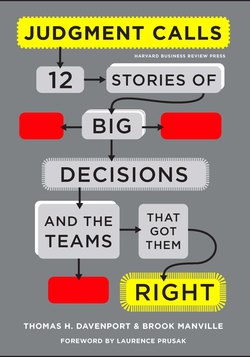Читать книгу Judgment Calls - Thomas H. Davenport - Страница 20
На сайте Литреса книга снята с продажи.
Discovery Mission Success
ОглавлениеAfter the FRR, Gerstenmaier had doubts about making a March 15 launch date, but he decided to “kick it back to the team, give them the action, see what they can go do and see how it comes out.” Approximately one thousand people worked intensely on the problem.
A breakthrough came when an eddy current system, typically used to test the integrity of bolts, was successfully adapted to check for cracks in valve poppets without affecting that hardware. Results of those tests gave engineers and managers confidence that the risks of another valve malfunction were acceptably small.
The third FRR, on March 6, led to a “go” decision. “By the time we eventually all got together on the last FRR the comfort level was very high,” said O'Connor. “For one thing, everybody understood this topic so well. You couldn't say, ‘I'm uncomfortable because I don't understand.’ We had a great deal of understanding of not only what we knew about, but what we didn't know about. We had a good understanding of the limits of our knowledge as much as possible, whereas before we didn't know what those were.”
In the final decision-making session, the astronauts slated to take the controls of Discovery were also in the room. Sitting before the scientists, engineers, and managers, they were a powerful and visible reminder of the stakes of the decision. They too had a vote for readiness. If ever there were an example of a decision-making process engaging—critically—the people who had to live with the judgment made, this would be it.
STS-119 was approved for launch on March 11. After delays due to a leak in a liquid hydrogen vent line (unrelated to the valve problem), Discovery lifted off on March 15, 2009, and safely and successfully completed its mission.
